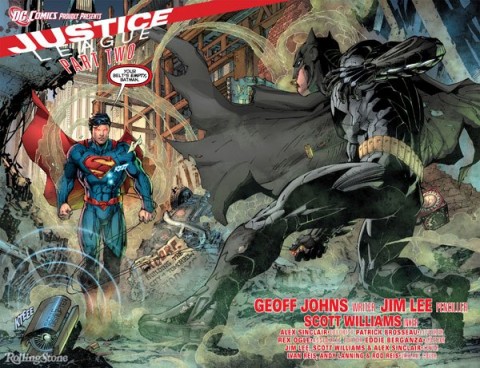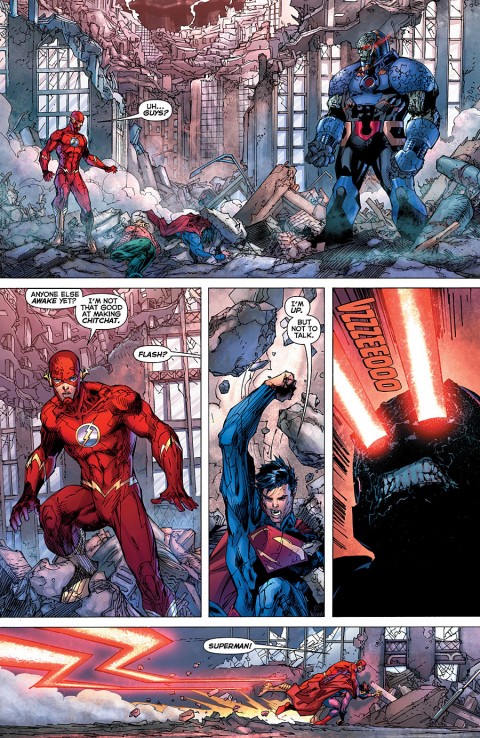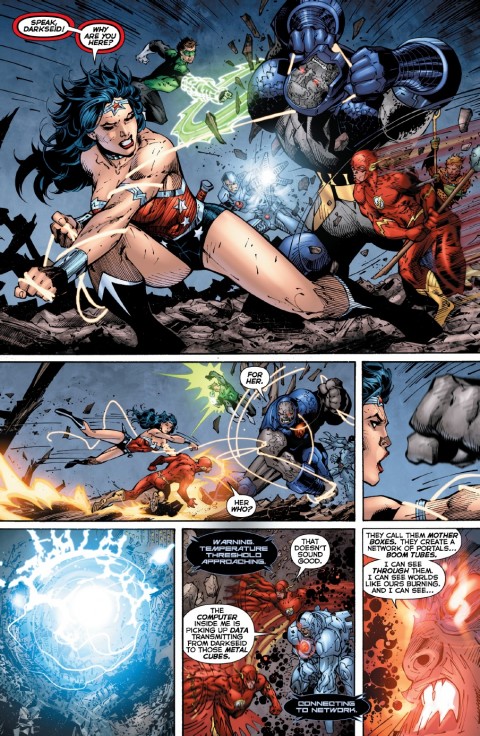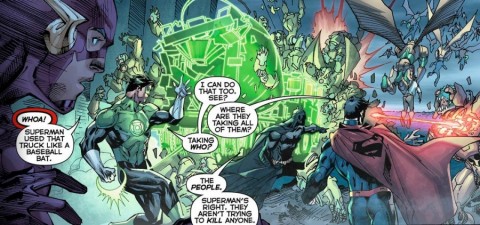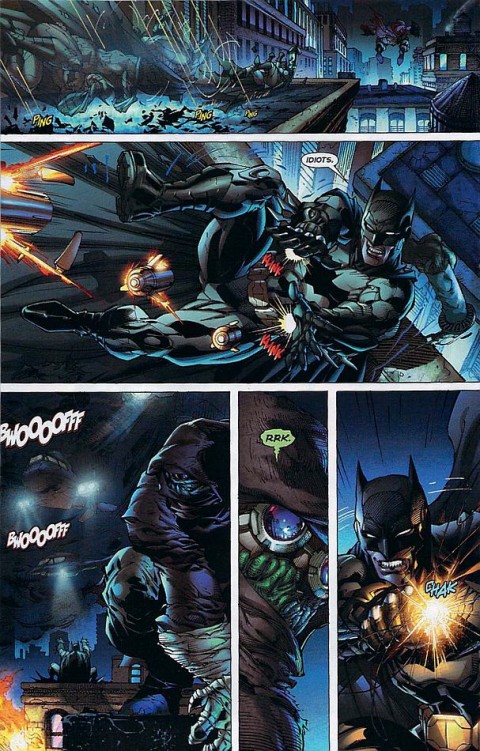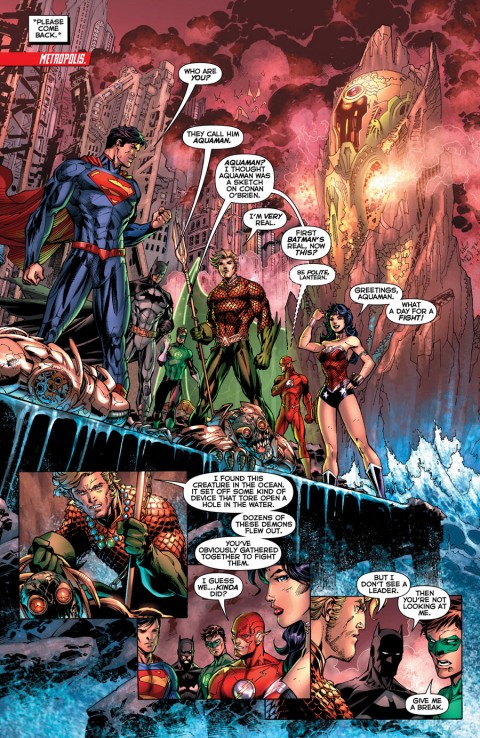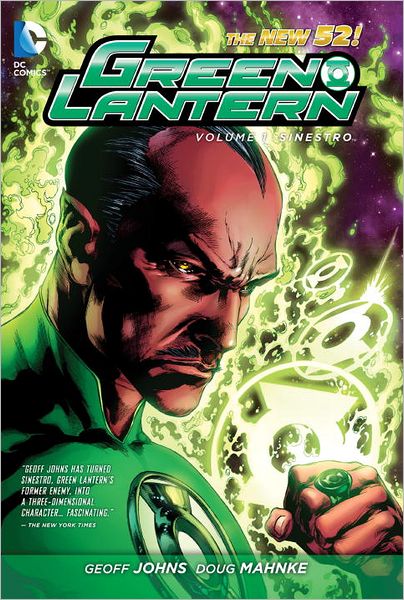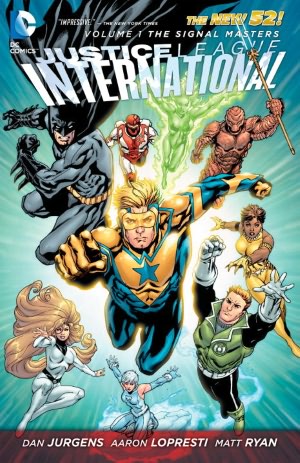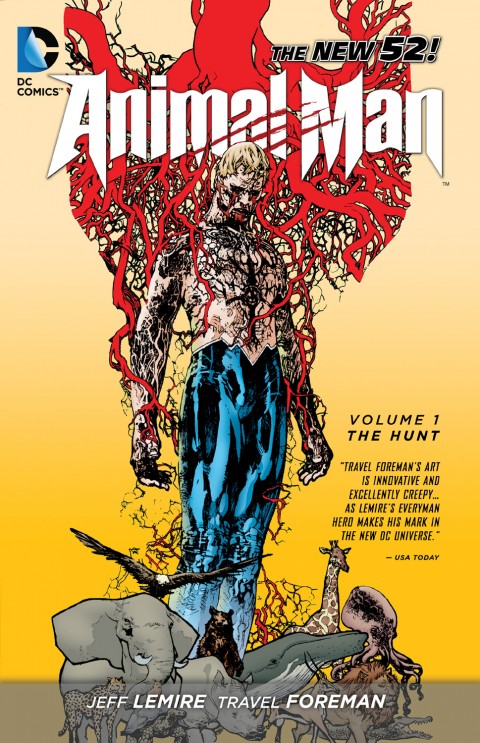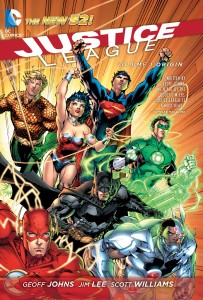 JUSTICE LEAGUE Vol. 1 Origin
JUSTICE LEAGUE Vol. 1 Origin
Collects Justice League #1-6
Written by Geoff Johns
Pencils by Jim Lee
Inks by Scott Williams
Released May 2, 2012
DC Comics, 176-page color hardcover, $24.99
Content rated T – Teen
Order online: Amazon, Book Depository
Justice League: Origin is the first collection of what is clearly the flagship title of DC’s “New 52” lineup. Its written by DC Comic’s Chief Creative Officer, Geoff Johns, with pencils by DC’s Co-Publisher, Jim Lee, and inks from Lee’s frequent collaborator, Scott Williams. The lineup consists of all of DC’s most iconic characters (plus Cyborg) and, if the epilogue is any indication, seems to be where the meat of the “New 52” meta-plot will take place. It’s also shallow, uses a single note to characterize most of the team members, and offers practically nothing in way of characterization for its principle villain. Despite that, Johns, Lee, and Williams still manage to deliver an adrenaline-fueled action blockbuster of a superhero story that will certainly give fans of these characters something to be excited about.
Set five years before what is “present day” for most of the rest of the “New 52,” this volume doesn’t offer much in the way of plot and is, in fact, mostly one big 6-issue fight scene that serves as an excuse to get the gang together. Strange creatures – recognizable as redesigned Parademons to older fans – have been spotted in various cities in the United States, specifically cities known for superhuman activity, planting strange boxes (Mother Boxes) for unknown reasons. Green Lantern spots one in Coast City and then tracks another to Gotham City where he runs into Batman. They decide that maybe that alien guy in Metropolis knows something about it and go there to find Superman and, 5-issues later, the whole team has been drafted.
After mentioning Parademons and Mother Boxes, it should come as no surprise to anyone who knows what those things are that Darkseid turns out to be behind all of this. What is less clear is why. There are a couple of vague lines of dialog mentioning Darkseid’s search for his daughter, but they don’t really amount to anything in this volume. For all intents and purposes, Darkseid is a generic scary-looking alien invader. Its also never explained why he would place his Mother Boxes, which form a kind of transportation network that allows him to boom-tube his way to earth, in cities known for superhuman activity seeing as those very superhumans would surely be the only legitimate resistance he could expect to find on Earth.
Johns’ dialog, as usual, straddles the line between being cool and inspiring and simply being cheesy and insipid. Even when it is later played up for comedic effect, Green Lantern’s catch phrase, “Green Lantern’s got this!’, is absolutely cringe-worthy and Batman’s use of the term “power levels” only conjures up visions of the worst bits of Dragon Ball Z. But there are also moments where the dialog between characters is genuinely charming and affective, such as the humorous banter between Green Lantern and the Flash, Wonder Woman’s overeager battle cries, and Batman’s explanation of how his and Green Lantern’s motivations may not be as different as they thought at first.
But witty banter and a single emotionally relevant moment cannot cover up the one-dimensional characterization of these heroes. Green Lantern is a blowhard looking for approval, Superman is (oddly) quiet and eager to show how powerful he is, Flash takes a turn as the boy scout, Wonder Woman is just looking for a fight, Batman has a chip on his shoulder, Aquaman thinks he’s too good for this team, and Cyborg is angry at his father. The characterizations being a little bit off is forgivable as this is a story taking place when each of these heroes was a bit younger, less mature, and unsure of what being a superhero really means since no in the reborn DC Universe has ever done it before, but Green Lantern and Batman are the only members of the team who even get anything that can be justifiably referred to as a character moment.
There’s an argument to be made by saying that such characterization is best done in each of these heroes’ individual series and that seeing them all come together to fight a threat too big for any one of their books is the whole purpose of Justice League. And, despite the shallowness of his plot, Johns delivers in that way. Seeing the newly formed League do battle with unending hordes of Parademons is viscerally exciting. Darkseid’s first “New 52” appearance, even if you can see it coming from the first pages of the first issue, is still something that fans won’t want to wait to see. The better bits of dialog are genuinely endearing. And that kind of story and storytelling will be more than enough to win over many fans for this book, but is it too much to ask for depth and excitement?
Much of the credit for the visceral thrills of this adventure should fall the Jim Lee’s art. He’s proven before that he is one of the best when it comes to epic superhero action, and there’s plenty of that to be found in the first volume of Justice League, but Lee’s art isn’t without its flaws either. His splash pages are as big and beautiful as you would expect from Lee, though there’s at least one “knockout punch” shot that feels like it’s lacking the requisite physicality, but the bigger problem is that his art feels too big for the pages that aren’t big splashes. The layouts feel crowded, with too many figures or too much action in a frame not big enough to hold it all, with a couple instances of a character popping out of a panel to awkwardly float over two or three of them. It all serves to give the reading experience a slightly catastrophic feel. There’s also the coloring, done by Alex Sinclair. While the translucent-neon light used for Green Lantern’s light and the iridescent look used for the Fourth World special effects, as well as the polished, deep coloring of the other heroes and settings, all work well individually, together they’re incohesive and can feel disjointed when seen in sequence. It all creates a tension that is certainly appropriate for a huge battle during an interstellar invasion, but its a tension that isn’t always enjoyable and sometimes distracts from the narrative flow of the story.
Despite its varied flaws, Justice League: Origin is still quite enjoyable as long as the reader isn’t looking for a cerebral masterpiece. In a sense, it is the quintessential Justice League story, that of the world’s greatest superheroes banding together to protect Earth from an alien invasion just as they did in their first adventure decades ago against Starro (an allusion that Johns and Lee do not miss the opportunity to make). And that is perhaps the most appropriate story to tell as the team makes their debut in this new DC Universe. Hopefully, as this series catches up to the rest of the “New 52” chronologically, we’ll see some nuance added to the portrayal of these characters. And, with Warner Brothers’ track record, this may be the closest thing to a The Avengers style Justice League movie we’re likely to see for a while. If that’s the case, you could do a lot worse.

